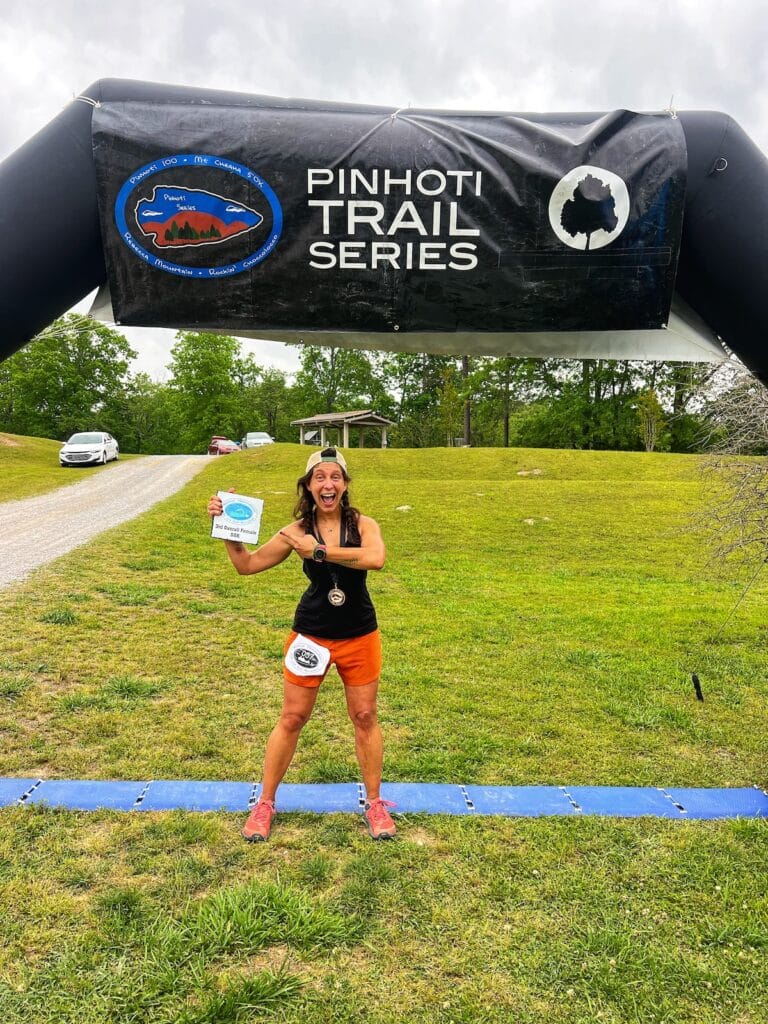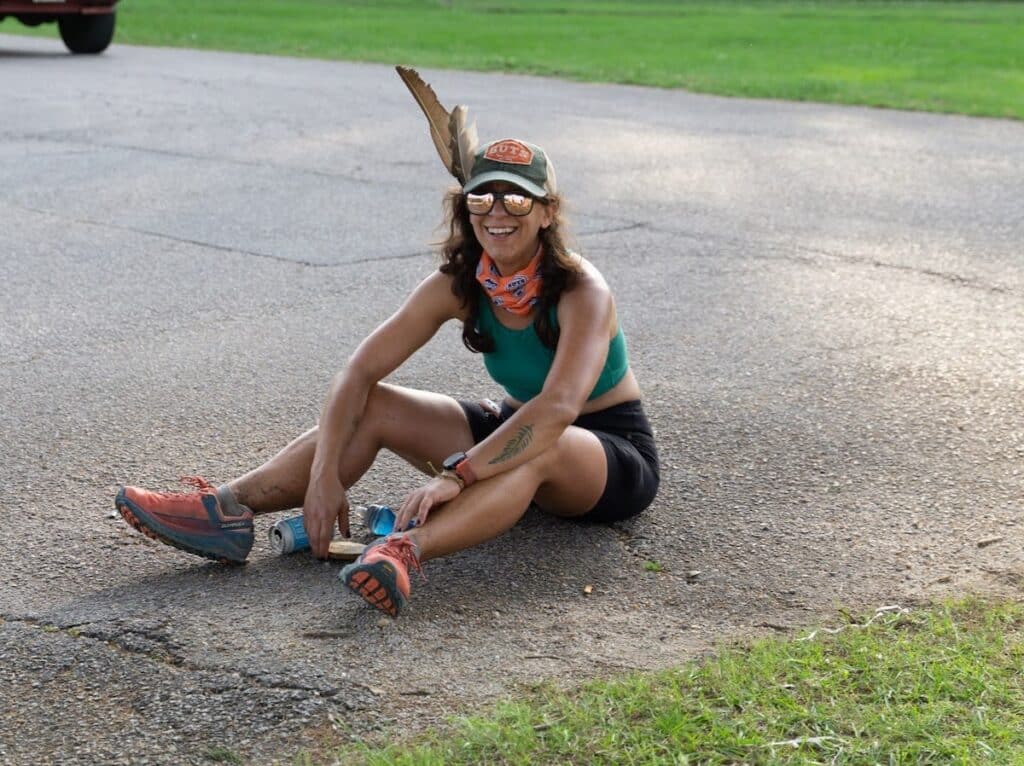When “Of course my knees hurt! I’m a runner,” is actually something much more sinister. How often do we brush off pain associated with running? “My foot hurts, I bet I need new shoes.” “It’s just a rolled ankle I’ll be fine.” “Oh yeah, I’m limping because I have runner’s knee.”
We self-diagnose, take a day or two off, then grit our teeth and get right back at it. We assume it’s nothing because we want it to be nothing. We fear the worst-case scenario that something is seriously wrong. That we’re going to be sidelined for months. Or in my case, possibly forever.
I was 3 miles into a 12-hour race that would kick off my 2021 racing season when my knee just…gave out. No fall, no trip, no reason at all for its current dramatics. My leg wouldn’t bend or straighten without effort. There was audible clicking.
But I had a robust racing season ahead ending with a 100-miler in November. I didn’t have time for a mysterious knee injury. So what did I do? I kept running for 20 more miles until a volunteer pulled me aside and said “You’re limping a lot. I can hear your knee. You may have torn your meniscus.”
Cut to an MRI. An initial diagnosis of a torn meniscus. A surgery. Waking up to have my nurse-turned-good friend (and Trail Sister!) pay me a visit. Coming off anesthesia, I just assumed she wanted to hang out. Spoiler alert—nurses don’t come to your house to “hang out.” She had some bad news and wanted to tell me in person. My surgeon found not just a torn meniscus, but almost no cartilage, worn-down bone, and really screwed-up ligaments. It was so bad, so unexpected, so unrepairable at the moment, that he stopped the surgery.
I have osteochondral defects in both my knees. My kneecaps sit sideways and crooked, obliterating all the important pieces in and around my patella. At the time, no one knew if I’d be able to run again comfortably. No one knew how I had been running ultra marathons for almost a decade on knees this bad.
“Of course my knees hurt! I’m a runner!” I repeated again and again to every incredulous medical professional. Aren’t they supposed to? You’re telling me it’s not normal to have your knee swell so badly after a 100 that you need to cut your pants? Even if it’s a difficult Hardrock-qualifying race? Apparently not, I was told.
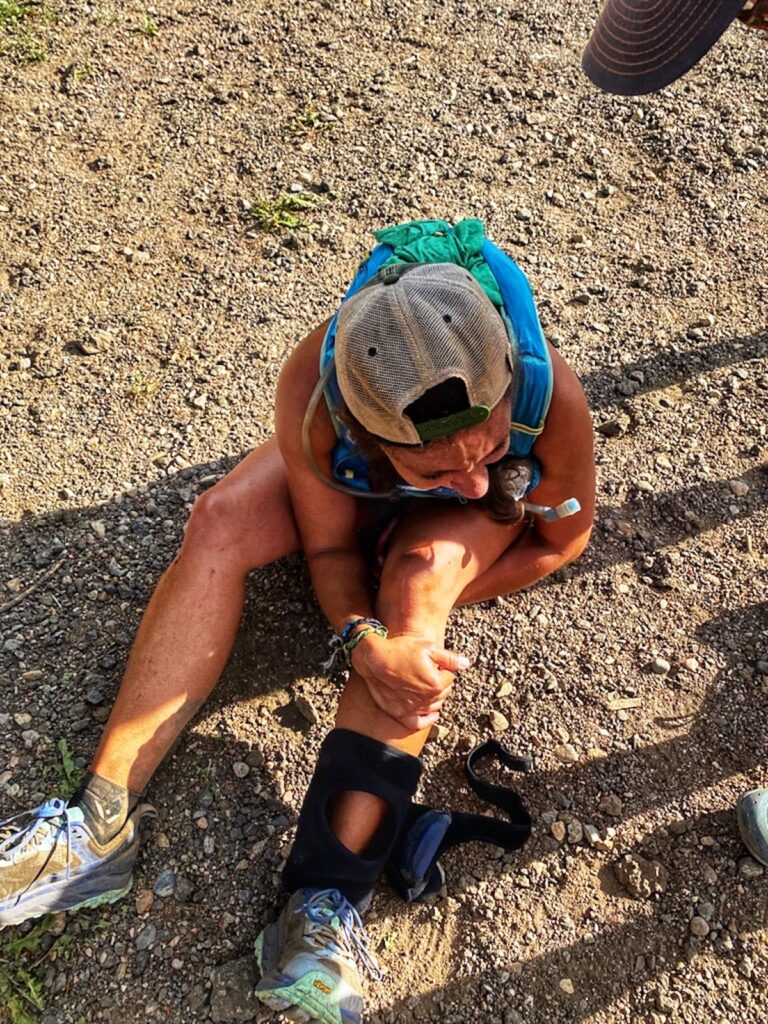
The unknown is the scariest part. Such is life. If there was even the smallest chance that I’d be able to run again—hell, even comfortably hike—I wanted to try for it. My initial surgical team and medical friends spent a month consulting with other surgeons, other hospitals, other patients. Could this be fixed? Could I still be active? Entire teams wouldn’t take the case. One surgeon backed out the week before putting me under the knife (thank you for that!), saying he wasn’t confident enough. Other surgeons and fancier clinics around the country do this surgery, but long-term success and the happiness of patients was…not stellar.
Then Lady Luck hit—there was a surgeon from New York City right here in Birmingham, Alabama who felt confident he could attempt this uncommon procedure. No promises, but let’s try.
My surgery was a tibial osteotomy, lateral release, and MPFL reconstruction. In human terms, they took off my kneecap, filled some holes with human cadaver cartilage, added a cadaver MPFL, released some tight tendons, and then broke my shin so they could screw my quad muscles properly into place and make my kneecaps sit snug as a bug in a rug. They also did plasma-rich platelet (PRP) injections and drilled a hole into my tibia to stimulate regrowth where it had been broken.
People assume the hardest part of recovering is not being able to run. And that may be true for some runners. That was never my issue. I had agreed well in advance with my surgeon that to have the best possible long-term outcome, we would do the longest and must conservative recovery approach. I treated recovery like an ultra – wrote all of my PT sessions into my calendar, tracked everything on Strava, celebrated every single goal. I also leaned into other loves of mine – writing, reading, catching up on every series people told me to watch. I also worked with my therapist and increased my antidepressant. The 15 months of recovery were still a known, still a safe place to be. If I wasn’t trying to run, I wouldn’t know if I could run.
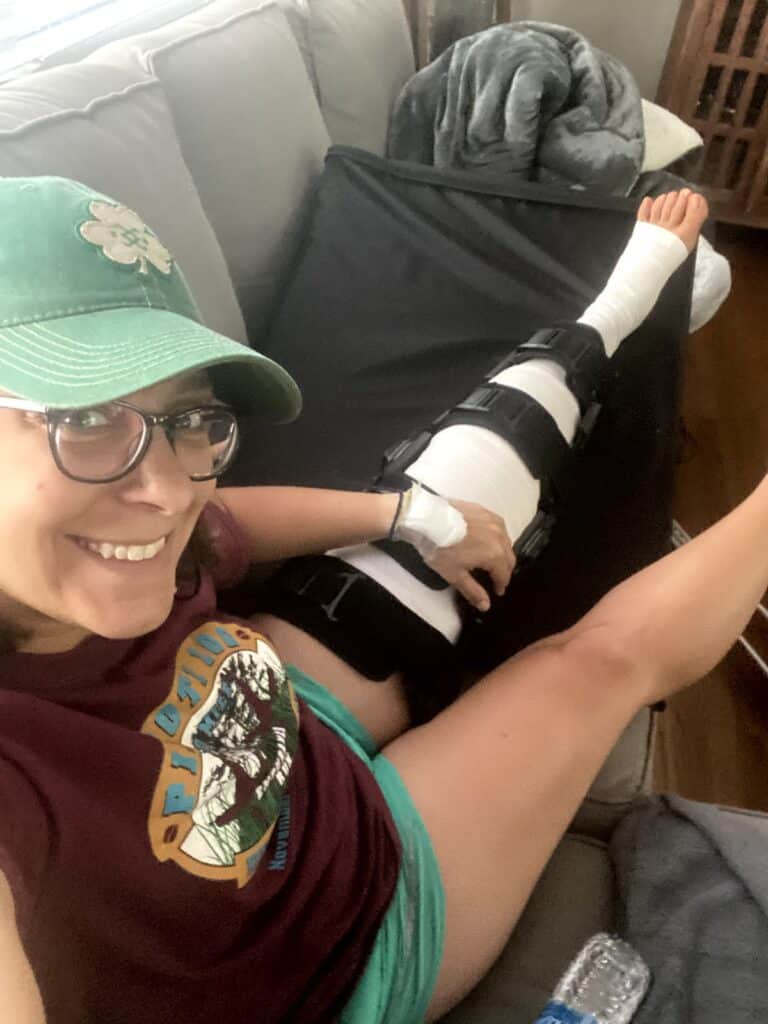
The hardest part ironically came the moment I was cleared to try and run a mile, when I had brand new shoes, a shiny new training plan, and a year’s worth of miles and conversations to catch up on.
My team said that I was ready, but I was terrified. What if I got hurt? What if I fell and undid all that work? What if I couldn’t run? What if I couldn’t keep up with my friends? Toe a start line? Feel the exhilaration of a finish line?
At the same time, I was so excited to run again, to train again, to have lofty goals to chase. I wanted to erase the past year and pick up right where I left off.
This is the part that’s not meant to sound like a humble brag so pardon if it does. Truly. Prior to the surgery, I trained fine enough and was able to finish ultras. I was also the first to agree to shorten a run, stop and take photos, walk, skip a run. In short, I was lackadaisical in my training.
So then even with my shiny new shoes and coach and training plan and renewed sense of excitement for running, I fell back into my old training ways. Bare minimum weekly. Old habits die hard, they say.
Looking back with a more honest understanding of myself as a runner and as a person, it’s no surprise that I didn’t achieve my A goal finishing 100-miler only eight months after being cleared to run. that was a super ambitious goal even if I had put in 100% effort.
I hadn’t fully respected my body. I had literal new body parts and was essentially a brand new runner, but I expected her to be identical to my old body. I pushed her too hard at times, expected too much of her too quickly, then was disappointed when she didn’t perform to my high expectations.
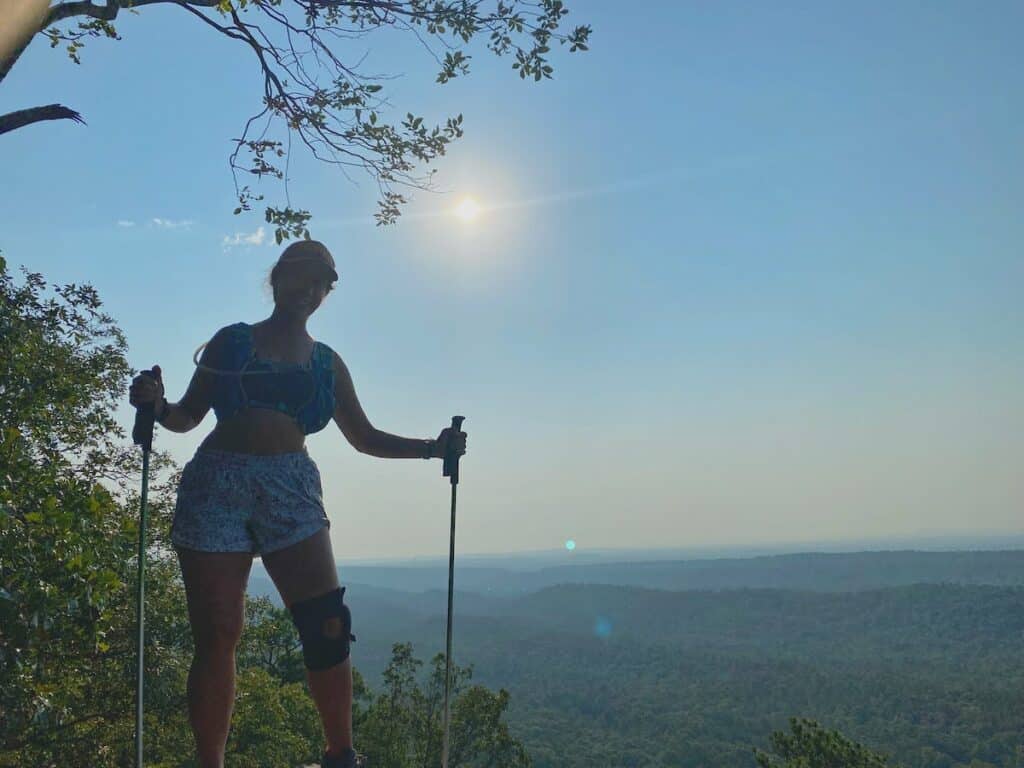
So my epic return to running wasn’t what I had dreamed of. When I realized I had another chance to make things better in 2023, I went full send. I shined a light into all my past behaviors, cleared out the cobwebs of my bad habits, and took a new approach to training. New body new me new chance at being successful.
And I successful I was, beyond my wildest dreams. I ran three 100s, placing in two of them, and placed in 6 more races. I trained harder than ever but was also healthier and happier than ever. My other knee still needs the same surgery, but my medical team monitors it closely. I’m currently training for my first 200 in April. If life were a movie, this would be one hell of a happy ending.
If you only take one thing away from this article, it’s go to the doctor! Consistent pain and swelling is your body screaming at you that something’s not right. Going to the doctor is scary because it’s better to push through or hope the pain goes away then to hear whatever news the doctor tells you , but it’s not worth it. Get your answers, make a plan, and move on.
And maybe this – try your best to be patient. Whatever you’re going through sucks a lot, but try not to see it as all bad. Use it as a reset. Yes, you will lose fitness. Yes, you will probably gain weight. Yes, you’ll probably have many days where you don’t feel like yourself and wonder if you’ll ever get back to where you were before. But the great thing about trail runners is that we are resilient – we don’t back down from challenges. We’re great at problem-solving. We know all too well that if we feel bad, wait a little and things will get better.
Trust me, I know firsthand.
